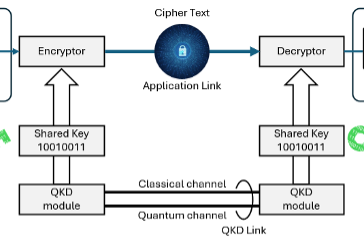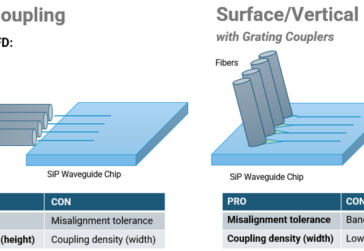使用 VSFF 连接器提高可持续性
The Greenhouse Gas Protocol was created by the World Resources Institute (WRI) and the World Business Council for Sustainable Development (WBCSD) and introduced in 1998. It establishes a benchmark for quantifying and reporting emissions and is the most extensively adopted international standard. It is utilized by governments, industry groups, nonprofit organizations, and businesses alike. As of 2016, approximately 92% of Fortune 500 companies implemented the GHG Protocol, either directly or through a customized program derived from it. More countries around the world are requiring companies to submit emission reduction targets and reports.
Plastics contribute to greenhouse gas emissions across their lifecycle, from production to disposal, with decomposition times ranging from 20 to 500 years, during which they may leach into the environment. Many countries aim to reduce single-use plastics and promote recyclables through recycling, regulations, and taxes. However, only 10% of plastic waste is recycled due to the complexity of separating and sorting materials, especially in fiber optic patch cords containing various components like aramid yarn, glass, and metal. Reducing plastic in fiber connections can help address these challenges. Optical connectors, which precisely align fiber cores (around 9 µm for single mode), require durable materials like Polyetherimide (PEI) for high performance in varied environments. However, PEI has a high environmental impact, emitting 18.24 CO2eq per kilogram of resin.
The LC and MPO connectors are the most common in data centers because they are compatible with pluggable transceivers. The LC connector, developed by Lucent Technologies, uses a 1.25 mm outer diameter ceramic ferrule, often in duplex form. The MPO connector, developed by NTT, includes an MT plastic ferrule that can house up to 16 fibers spaced 250 µm apart, making it suitable for high-density applications, especially for leaf and spine switches.
Newer VSFF connectors like the CS and SN have smaller footprints than LC and MPO. The CS connector, standardized as a SEN connector (TIA/ANSI-604-19), features a 3.8 mm ferrule pitch and a 7.85 mm housing body width. This compact design allows QSFP transceivers to support two CS connectors, doubling capacity compared to a duplex LC. The SN connector, standardized under IEC 61754-36, has vertically aligned 1.25 mm ferrules, with an SN-MT version that uses a multi-fiber plastic ferrule (like MPO) to further increase fiber density. The SN-MT’s fiber pitch is reduced to 200 µm for simpler transitions to ultra-high-density cables.
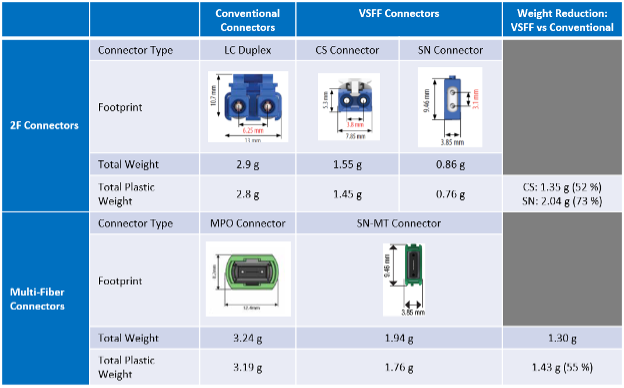
The average total plastic weight of VSFF and conventional connectors shows significant reductions in plastic content. The CS and SN connectors reduce plastic use by 52% and 73%, respectively, compared to the LC duplex connector. The SN-MT connector achieves a 55% reduction compared to the MPO connector. These reductions are crucial in data centers, where thousands of connectors are deployed, leading to significant material savings and reduced rack space usage, enabling higher fiber count trunk cables to be fully terminated in a single rack.
Let’s compare the plastic content per channel using the legacy solution using MPO and LC duplex connectors, and the VSFF solution using SN-MT and SN connectors. Based on a 1RU patch panel, the legacy solution can only accommodate up to 72 LC Duplex connectors, while the VSFF solution based on SN connectors can accommodate up to 216 channels. The VSFF solution can achieve a 43.8% reduction in connector plastic content. In addition, more plastic can be saved from the reduced material usage on cords, and cables.

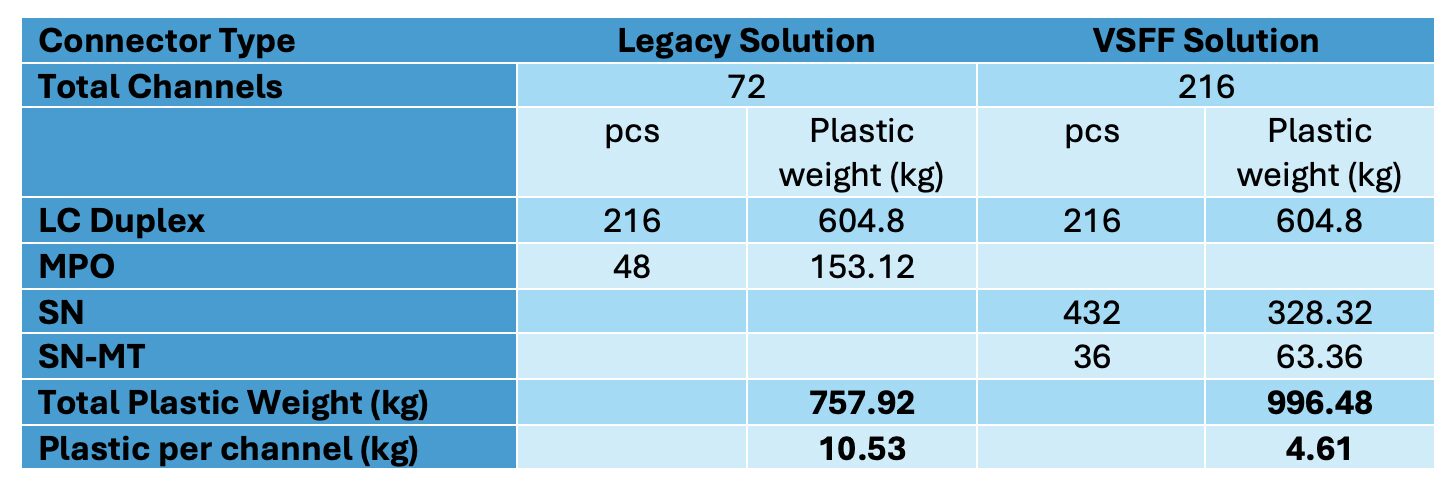
The smaller footprint of VSFF connectors becomes significant to material consumption reduction when thousands of connectors are deployed inside a data center. In addition, the added benefit is an increased rack space usage efficiency which further reduces material needed to manufacture patch panels. The design of VSFF connector such as the SN-MT is also designed to be compatible with 200-micron fibers that is used in ultra-high-density cables. The plastic content of such cables is also significantly reduced.
For example, The plastic weight of conventional versus ultra-high-density OSP cables with 1728 fibers and 3456 fibers. A plastic content reduction of 7% and 31% is achieved with 1728- and 3456-fiber ultra-high-density cables, respectively, in comparison to conventional cables.
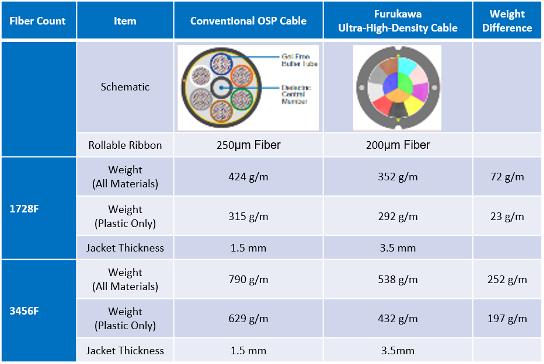
结论
VSFF (Very Small Form Factor) connectors, such as CS and SN connectors, contribute to sustainability in fiber optics by minimizing plastic use and increasing fiber density in data centers. Their compact design allows for more connections within the same space, reducing the overall material needed per connection compared to larger connectors like LC and MPO. VSFF connectors also support advanced recycling initiatives, as they contain fewer materials and can be designed to simplify disassembly, aligning with global efforts to decrease plastic waste and improve recyclability in the tech industry.


